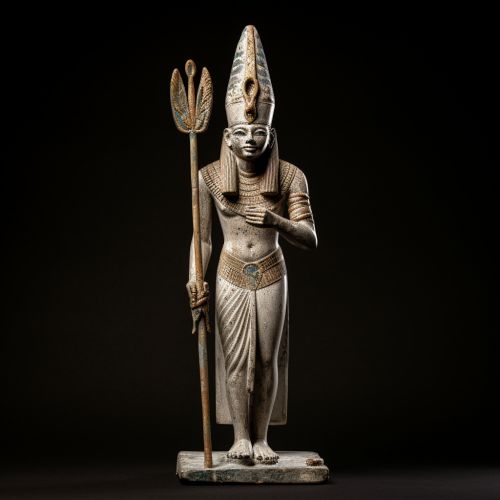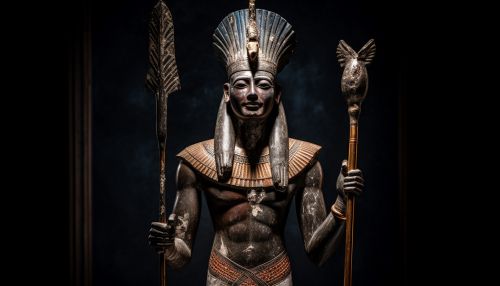Osiris
Origins and Mythology
Osiris, known in ancient Egyptian as Usir, was one of the most prominent deities in the ancient Egyptian pantheon. He was associated with the afterlife, resurrection, fertility, and agriculture. The mythology surrounding Osiris is complex and multifaceted, reflecting the deity's significant role in ancient Egyptian culture.


The origins of Osiris are somewhat obscure, but he is thought to have emerged as a god of fertility and agriculture during the Predynastic Period of Egypt (before 3100 BC). The earliest known mention of Osiris is in the Pyramid Texts, a collection of ancient Egyptian religious texts from the Old Kingdom. These texts depict Osiris as a king who was murdered by his brother Set and then resurrected by his wife Isis to become the ruler of the afterlife.
Role in Religion and Society
Osiris played a crucial role in ancient Egyptian religion and society. As the god of the afterlife, he was believed to judge the souls of the deceased and determine their fate in the afterlife. This belief was central to the ancient Egyptian concept of maat, a complex term encompassing truth, justice, and cosmic order.
Osiris was also associated with the annual Nile flood, which was crucial for agriculture in ancient Egypt. The myth of his death and resurrection was seen as a metaphor for the cyclical nature of the Nile flood and the growth of crops. This association made Osiris a key figure in ancient Egyptian agricultural rituals and festivals.
Iconography and Worship
Osiris was typically depicted as a mummified pharaoh, holding the crook and flail, symbols of kingship, and wearing the Atef crown, a white crown with ostrich feathers on either side. He was often shown with green or black skin, symbolizing rebirth and fertility.
The worship of Osiris was widespread in ancient Egypt, and he was venerated in many temples and shrines. The most important cult center of Osiris was in Abydos, where an annual festival was held to reenact his myth. This festival, known as the Mysteries of Osiris, involved a procession and a ritual drama, and was one of the most significant religious events in ancient Egypt.
Influence and Legacy
The cult of Osiris had a profound influence on ancient Egyptian religion and culture. The belief in life after death and the judgment of souls, central to the Osiris myth, shaped the ancient Egyptian practices of mummification and the construction of tombs and pyramids.
The influence of Osiris extended beyond Egypt. In the Greco-Roman period, Osiris was identified with several Greek and Roman deities, and his cult spread throughout the Mediterranean. The myth of Osiris also influenced Christian beliefs about resurrection and judgment.
